In present-day United States of America, policing presents as a major problem to communities. During the Obama administration, the race relations between police officers and minorities in the United States have not improved. Black Lives Matter spreads the message about police brutality.1 Media also influence people to take more caution when interacting with the police. The laws regarding policing in America overlaps with gun restriction issues because some officers justified their immediate reliance on their weapon in order to resolve conflicts. Even though media and policing laws were known issues that impacted the deterioration of the relationship, police chief David Brown became successful at improving relations with the community.
Dallas police chief David Brown wants to improve the public’s trust in policing. His memoir Called to Rise: A Life in Faithful Service to the Community That Made Me confirmed evidence about his early life. Brown did not completed college, but decided to apply for the police department.2 His father did not support Brown’s decision because he did not trust police officers. In the twentieth century, racism caused the interactions between minorities and police officers to not go well. While Brown knew about this information by his father, he still wanted to join the police force.3 Fortunately, Brown advanced his career in law enforcement and took on the role as the Dallas Texas police chief officer. Brown wants to serve the people and he also wants to improve the relations between Texas citizens and police officers.
Daily newspapers impacted Brown’s goal to improve trust by issuing stories about his relations with leaders. He became proactive rather than reactive in order to improve relations with his community about policing. Brown hosted a gathering, which gained approvals from pastors, senator, city council members, and the city manager.4 They supported Brown by providing their statements to local reporters, who wrote about the event. While Brown did not directly use the media at that time, his support from other people influenced them to work with the media. Daily newspapers like the Dallas Morning News set the standard by spreading the positive message to the audience about him. 5 The media’s impact proved that their involvement set the plan for Brown improve relations.
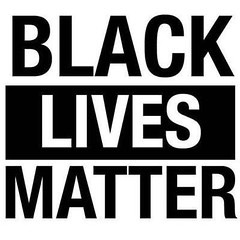
Federal and state laws affect police officers’ duty and their discretion of gun usage. Police officers are allowed to use deadly force if the officers’ perception sees that the other party is considered a threat.6 Anytime that an officer interacts with a suspect, the officer must use good judgement in order to determine if that suspect is a threat to their life. If the suspect has an item that is viewed as a weapon that can cause deadly harm to the officer, then that officer is legally allowed to use deadly force. This becomes controversial as the media reports cases of police officers killing people. In the state laws, the law about the use of deadly force and the notion of a police officers’ self-defense became controversial. In the state of Texas, if a police officer has reasonable belief to that extent of force, then they are allowed to use it.7 This provides evidence that police officers can make the decision to ultimately end a person’s life. The notion of discretion applies and may cause people to question the definition of the word reasonable.
While the state laws regarding police officers use of force to defend themselves are criticized, other state laws that allow police officers to protect another person is acceptable. In the case of an officer using self-defense in order to protect a victim, the use of force is clear because it saves another citizen’s life from a criminal. If a police officer uses lethal force in order to defend another person, then that is justified.8 In this context, this does not deteriorate relations between the community and the officer because it supports the their duty to protect the people from criminals.
On July 2016, officers Blane Salamoni and Howie Lake II arrived at the scene in response to an emergency call regarding an individual threatening another person’s life. The officers identified the suspect as Alton Sterling, and shot him. According to The Washington Post, the facts are unknown as to whether Sterling was reaching for his gun.9 Nobody knows the complete facts of the incident. The officers could easily testify that he was reaching for a weapon. However, if there were witnesses closer to the scene, then their testimony still does not constitute enough evidence against the officers. Attorney General Jeff Landry stated that “the investigation concluded that both officers attempted to make a lawful arrest.”10 Both officers allegedly did their jobs without abusing their use of policing authority. Even though that incident occurred outside of Dallas, it impacted Chief Brown’s relations with the Dallas communities on a large-scale.
Media impacted the public’s opinion with a posted video, which had more value than scientific evidence. Landry presented toxicology reports, which proved Sterling was on drugs during that encounter with the officers. The reports failed to convince the public that the shootings were deemed reasonable since additional evidence were presented via media. A witnesses submitted additional evidence that contradicts the negative narrative of Alton Sterling. At that time, both officers used their discretion to view Sterling as a threat, which allowed them to legally use that type of force on him.11 When the witnesses’ video was released out to the public and the media, this became controversial nationally, which deteriorated the public’s trust of officers. People trust non-edited videos rather than scientific evidence since the reports attempted to criminalize Sterling.
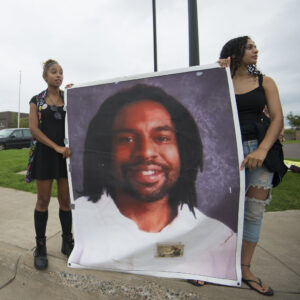
The next day after the police officer killed Alton Sterling, officer Jeronimo Yanez shot Philando Castille because he believed that the man was reaching for his weapon in the car.12 Castille’s girlfriend, Diamond Reynolds recorded the aftermath of the incident live in Facebook. In the recording, she explained what happened at the incident. Although the police officer did not provide any additional evidence to prove that Castille was reaching for his driver’s license, this is tied directly to federal and state laws about justifications for the use of deadly force. Officer Yanez is legally allowed to shoot Castille in order to protect himself. In this incident, Castille told officer Yanez that he possessed a firearm within his vehicle and that he was going to reach for his driver’s license. Then, the officer acknowledges that information, but told Castille to not reach for his gun. Unfortunately, the officer believed that Castille was attempting to get his gun even though he said he was going to get his license. Officer Yanez was found not guilty.13 The court found it extremely difficult to charge Yanez because of the word verses word scenario. The officer proceeded following the federal law of police officers using guns. Yanez was proven to have reasonable fear, but the Black Lives Matter organization members viewed the officers’ actions as unreasonable. The results of this incident became another shocking moment for citizens at a national level.
Media articles impacted the public’s opinion by discrediting Yanez’ statement of having reasonable fear during his confrontation with Castille. Christopher Ingraham, a writer for the Washington Post, reported that the illegal use of marijuana decreases an individual’s hostility to another person during a confrontation. This application of scientific evidence is applied to the scenario between Castille and Yanez. Yanez’ smelling of marijuana proved that he did not represent a threat to the police officer.14 Supporters of the police department solely relied on the Ingraham’s analysis on the effects of marijuana. However, the report released by the Washington Post suggest that Yanez’ reasoning did not justify the shooting. People understood Ingraham’s claim, which influenced their opinion to distrust the police department.
Another media article that impacted people’s distrust in officers was the article questioning the United States’ second amendment. The Independent published a criticism of who’s allowed to carry a gun without being perceived as a threat to the police.15 This influenced attention towards conservatives and gun-right advocates. The criticism showed that police perceived minorities with a gun as a threat. Media proved that they influenced the public’s opinion by making a logical argument against officers.
Critics against the Black Lives Matter movement suggested that they have a history of violent protests involving injuring civilians. According to FOX News, protestors chanted “pigs in a blanket, fry them like bacon.”16 In this chant, it suggests that people can harm police officers in order to dispose of corruption within police departments. This influences extremist protesters to damage property in the United States and believe that their actions are justified in order to create police reforms. Since these protesters deemed cops as murderers, the reputation between officers and civilians had worsened exponentially. Critics believe that they are actively calling all officers killers, which prevents police reformation. Depending on the people’s alignment with their respective political party and the ideology, the goal to improve relations failed at that time.
In the United States politics, media directly impacted Brown’s goal to improve relations because they are susceptible to bias. An example includes FOX News since political opinions have the tendency to persuade the public’s view about officers rather than reporting the events. Depending on the given story, people will know what to think about. If the specific news does support the respective political ideology, then that producers are likely to not report it.17 This happens for both reporting news of anti-police and supporters for police. CNN is known for bringing stories that supports liberals since conservatives agree that CNN is a liberal network. 18 this case on the Black Lives Matter, FOX News have been known for critiquing anti-police movements. This failed to help Brown to improve relations because it divides people based on how they view policing.

After the incident involving Alton Sterling and Philando Castille, Black Lives Matter hosted the protest against police brutality in Dallas, Texas. Peaceful protesters chanted “don’t shoot” as they marched in downtown Dallas.19 This chant differs from their previous chants because it sends a clear and direct message to the police department instead of referencing rhetoric about cops. Later in the evening, the Dallas sniper shooter Micah Xavier Johnson starts shooting at the police officers. Johnson murdered five police officers.20
Micah Xavier Johnson’s background impacted the results of the Dallas sniper shooting incident. Johnson’s motif was to target white police officers.21 Investigators obtained evidence in social media that he was affiliated with the African American Defense League, an organization that posted online messages in social media platforms about killing white officers.22 Johnson’s military experience provided him with enough training in how to use firearms more proficiently than police officers and civilians. His military career ended with a dishonorable discharge because a woman accused him of sexual harassment.23 Even though he did not finish serving his term in the military, his service in the military made it difficult for the police to detain him immediately during the Dallas sniper shooting incident. Dallas police officers failed to stop the sniper and prevent casualties because they do not have the same type of training with firearms as the military provides.
Chief David Brown took action in order to resolve the tensions between the Dallas residents and the police department. He went to speak at a press conference and recommended the protesters to work at the police department.24 Brown believed that protestors wanted to make a change on implementing safe communities. While sending the message to peaceful protestors he encouraged them to get a job within the force because working at the police department is the place of change. He believes that if the protestors worked at the police department, then they can improve the functionalities of the police department. Overall, the Dallas police department received more job applications than ever before. Brown’s work can be quantified and is measurable by the increasing number of applications.
While news outlets impacted the relationship between police officers and citizens, social media impacted David Browns’ reputation. Twitter had posts that advocated for Brown to run for election as the next President of the United States, regardless of the two major political parties. 25 Other people’s actions on social media helped Brown’s reputation. His presence in social media provides evidence that people valued his work as the chief of police. Social media impacts on Brown’s life, spread a positive reputation to the public. Although Brown did not directly contribute to the Twitter posts about starting an election campaign, his actions encouraged people to talk about him. Social media created a positive impact for Brown to achieve his goals to improve his relations with his community.
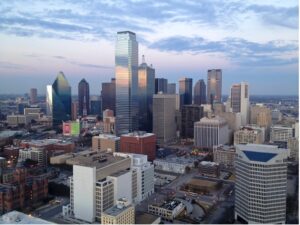
Brown provided his statement to the public about the Dallas sniper shooting. He was praised for creating a plan on “community policing.”26 Furthermore, he was interviewed about the aftermath of the Dallas sniper shooting. Brown mentioned reducing crime, influencing movements, and critiqued current policing practices. When crime rates are reduced, the people feel safe and that they can depend on the police. He agreed that the Black Lives Matter brought public attention about social issues regarding policing. In regards to his critiques, he stated that the Balch Springs police lacked proper training. If they were not properly trained, then the employees can either be well-trained, or be fired. Brown admitted that he “fired more officers than any chief in recent history.”27 Police departments would not find the police officers accountable as they defend their own officers. Brown’s action plan in reforming the police influenced people to trust him.
Media impacted Chief David Brown by providing him the opportunity to get interviewed on national television. The interview occurred after the Dallas sniper shooting. Depending on the network channel, the network could imply a risk for Brown since some networks can have media bias. CNN directly influenced Brown’s relations with the people by providing Brown the opportunity to get interviewed. The interview included topics about the sniper shooter, the use of bomb robots, and Brown’s background. 28 The interview gave Brown the opportunity to express his opinions about improving the relationship between police officers and people at the national level.
After Chief David Brown’s retirement in October 2016, his accomplishments and his work became recognized. The Dallas Sniper shooting illustrated for the public, the police officers’ courage and duty to protect the people. While people were protesting about police brutality, the police force ensured that they could protect the protestors in their best attempts. Mayor Mike Rawling and Ron Price praised Brown and complimented his legacy for the city of Dallas. Rawling highlighted Brown’s work as exemplary because he improved policing and reduced crime rates. Price said that Brown prioritized on “citizens first and his own personal needs last.” 29 Both relayed messages to the viewers and audiences that not all police officers are bad people. While relations in Dallas have evidence of increased trust between its citizens and police officers, police chief officers in other cities and states can follow Brown’s work to improve trust in their inner own inner cities.
Brown’s legacy shows how relationships between police officers and citizens can establish mutual agreement. People will need to be cognizant about how they interact with law enforcement. Individuals will continue to have views that supports police officers, or anti-police views that wants to defund police. Furthermore, the topic provides an understanding of how an officer is legally allowed to use their lethal weapons. It is important to recognize that an interaction between a driver and the police can have special instructions in order to prevent tragic events. While different political ideologies have their plans on improving their communities, they both have the same goal.
- Martel A. Pipkins, “‘I Feared for My Life’: Law Enforcement’s Appeal to Murderous Empathy,” Race and Justice 9, no. 2 (April 1, 2019): 181 ↵
- MICHAEL STRAHAN, “DAVID BROWN ON ‘CALLED TO RISE’.,” Good Morning America (ABC), June 6, 2017, 1. ↵
- MICHAEL STRAHAN, “DAVID BROWN ON ‘CALLED TO RISE’.,” Good Morning America (ABC), June 6, 2017, 1. ↵
- Naomi Martin and Elizabeth Findell, “Dallas Police Chief David Brown Gets Support of Leaders, Pastors,” Dallas Morning News, The (TX), October 10, 2015. ↵
- Naomi Martin and Elizabeth Findell, “Dallas Police Chief David Brown Gets Support of Leaders, Pastors,” Dallas Morning News, The (TX), October 10, 2015. ↵
- Richard M Thompson Ii, “Police Use of Force: Rules, Remedies, and Reforms,” CRS Reports (Library of Congress. Congressional Research Service), 2015, 7 ↵
- REAMEY, GERALD S. 2021. “Police Use of Force Laws in Texas.” St. Mary’s Law Journal 52 (4): 1090. ↵
- REAMEY, GERALD S. 2021. “Police Use of Force Laws in Texas.” St. Mary’s Law Journal 52 (4): 1107. ↵
- Berman, Mark, and Wesley Lowery. 2018. “Baton Rouge Police Officers Won’t Be Charged in Fatal Shooting of Alton Sterling.” The Washington Post, March 27 ↵
- Berman, Mark, and Wesley Lowery. 2018. “Baton Rouge Police Officers Won’t Be Charged in Fatal Shooting of Alton Sterling.” The Washington Post, March 27 ↵
- Berman, Mark, and Wesley Lowery. 2018. “Baton Rouge Police Officers Won’t Be Charged in Fatal Shooting of Alton Sterling.” The Washington Post, March 27 ↵
- Berman, Mark, and Wesley Lowery. 2018. “Baton Rouge Police Officers Won’t Be Charged in Fatal Shooting of Alton Sterling.” The Washington Post, March 27 ↵
- “Today in Minnesota, a Police Officer Was Found Not Guilty in the Shooting Death of a Black Driver.” 2017. CBS Evening News with Katie Couric, June ↵
- Christopher Ingraham, “Analysis: Officer Who Shot Philando Castile Said Smell of Marijuana Made Him Fear for His Life,” The Washington Post, June 21, 2017, Gale In Context: Environmental Studies ↵
- “You Can Carry a Gun in the US – so Long as You Don’t Look like Philando Castile,” The Independent (London, England), July 12, 2016, Gale OneFile: News. ↵
- “Rod Wheeler & Associates – Founder Interview.” 2015. Your World with Neil Cavuto (FOX News), August. ↵
- Tuggle, C. A. 1998. “The Bias toward Finding Bias in Television News.” Communication Reports 11 (1): 67 ↵
- Joel Turner, “The Messenger Overwhelming the Message: Ideological Cues and Perceptions of Bias in Television News.,” Political Behavior 29, no. 4 (December 1, 2007): 445 ↵
- “The end is coming”, said the sniper as he rained shots down into the crowd; Dallas shootings; Peaceful protest at spate of black killings by police turns into bloodbath as army reservist trains his gun on white officers.” Daily Telegraph London, England, July 9, 2016, 4. Gale Business: Insights (accessed March 6, 2023). ↵
- “Sniper Kills 5 Dallas Police Officers In Attack On Black Lives Matter Protest,” in All Things Considered, 2016. ↵
- “The end is coming, said sniper as he rained shots down into the crowd; Dallas shootings; Peaceful protest at spate of black killings by police turns into bloodbath as army reservist trains his gun on white officers.” Daily Telegraph, London, England, July 9, 2016, 4. Gale Business: Insights (accessed March 6, 2023). ↵
- “This Hate Group Called for Killing White Cops. Then Dallas Sniper Micah Xavier Johnson Started Shooting,” The Daily Beast, July 8, 2016, Gale In Context: College. ↵
- “Micah Johnson, Dallas Cop-Killer, Was Black Militant and Army Veteran,” The Daily Beast, July 8, 2016, Gale In Context: College. ↵
- Jacob Bogage, “The Dallas Police Chief Told Protesters to Apply for Police Jobs. Now, Job Applications Have Tripled.,” Washington Post – Blogs (blog) (Washington, United States Washington: WP Company LLC d/b/a The Washington Post, July 25, 2016), 1806553999, U.S. Major Dailies ↵
- “Twitter Is Drafting Dallas Police Chief David Brown for a Presidential Run,” Washingtonpost.Com, July 11, 2016, Gale In Context: College ↵
- RICHARD FAUSSET, Alan Blinder, and Manny Fernandez, “Police Chief, Calm Face in Dallas Crisis, Sees Demands Rising: Police Chief’s Appearances Have Alleviated Tensions in the City and the Nation,” International New York Times, July 13, 2016. ↵
- David Brown, 8 Questions With David Brown, Former Dallas Police Chief – Record details – EBSCO Discovery Service, June 19, 2017 ↵
- “Dallas Police Chief Speaks to CNN’s Jake Tapper; Police AndProtesters Clash After Week of Violence; President Obama to VisitDallas; What’s Next for Black Lives Matter. Aired 6-7p ET,” CNN Newsroom, July 10, 2016. ↵
- Manny Fernandez, “Dallas Police Chief Retiring, Weeks After Officers…: Full Text Finder Results,” accessed February 9, 2023 ↵
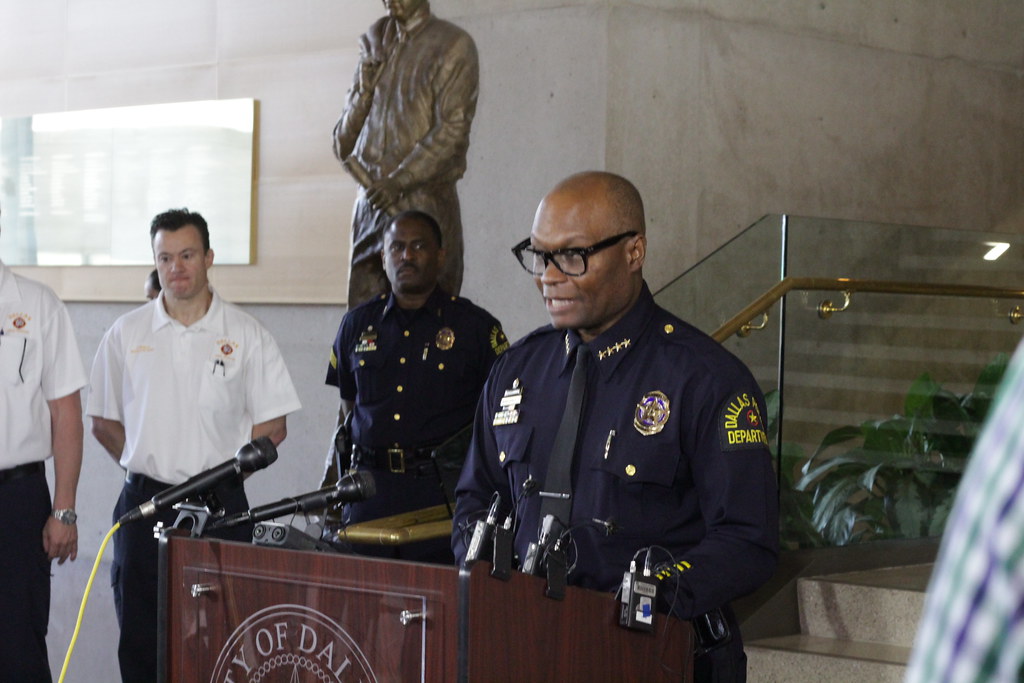
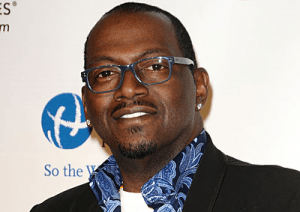

6 comments
LEE
Thank you for the article.Chief David Browns’s story is very impressive. I thought it has really nice story. I love reading this article. You provided many good information and nice stories. I can see your passion. It is amazing article. This is the important issue in our society. I would love to share this story to my friend. Thank you for the nice article.
Sebastian Hernandez-Soihit
informative piece that offers a nuanced perspective on the complex role of law enforcement in society. An interesting and detailed account of Chief Brown’s background and career, highlights his efforts to build trust and transparency between the police and the community.
Alexis Zepeda
Hello! Congratulations on publishing aa well-written article. I think Chief Brown’s story is rather refreshing to hear. Considering the last few years in relation to the public’s overall opinion on police, it is great to see that there are people that care what the public has to say. Prior to reading this article, I had yet to hear about any police department working to implement real change. I think it is articles such as this one that gives me hope for a better future. Great job!
Juan Aguirre Ramirez
Congratulations Darin on the great article you wrote! It’s so helpful and shows a side of things that the news usually doesn’t talk about. Given the social problems we have now, this is very important. Someone with such a clear goal as ending stigma and supporting peace for everyone is inspiring. I loved reading this because of how much you cared about it. Your writing really shows how much you care about this topic. Good job!
Olivia Flores
I want to say first off, congratulations as this is an amazing article. This is very informative and shows a side that the media doesn’t. I think it has a lot to do with the social issues that are faced in this country today. What an inspiring man with a goal in mind to end this stigma and achieve peace for all. This was such an ice read because of the way you wrote about him. You are passionate about this topic and you can see that through your writing. Overall such a fantastic job!
Olivia Lauer
Congrats on your publishment! Learning more about Chief David Browns Relations with the public was information I never knew about. “Dallas police chief David Brown wants to improve the public’s trust in policing. His memoir Called to Rise: A Life in Faithful Service to the Community That Made Me confirmed evidence about his early life. Brown did not complete college but decided to apply for the police department” this is such a good thing because the faith humanity had in the police has gone down.